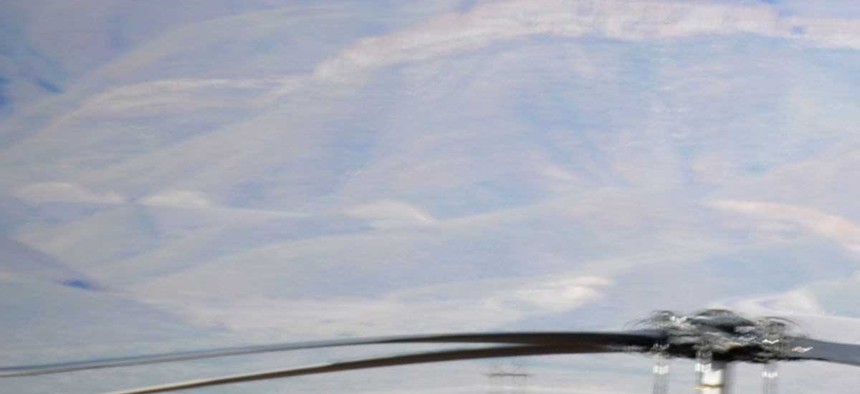
Soldiers taking part in the Network Integration Evaluation exercise at Fort Bliss, Texas U.S. Army photo by Staff Sgt. Kulani J. Lakanaria
A Marine Grunt's Take on GPS, Compasses, Radios and the 'Golden Hour'
Despite advances in technology on the battlefield, when it comes down to determining north, south, east or west, the compass is still a mighty handy gadget. By Bob Brewin
I had the pleasure to have lunch with four Marine officers at Fort Bliss, Texas, last week at the Army Network Integration Evaluation exercise, where they were testing a joint satellite-based command and control system planned for use by both services.
One of them, Maj. Christopher McGuire, executive officer of the 3rd Light Armored Reconnaissance Battalion, based at Marine Corps Air Ground Combat Center, Twentynine Palms, Calif., offered some valuable insight into the use of technology on the battlefield based his experience during three tours in Iraq.
This starts with basic tools, such as a compass, which “as a Marine infantry officer I know how use,” McGuire said, along with a GPS receiver to determine location and direction. When it comes down to determining, north, south, east or west, the compass is still a mighty handy gadget, McGuire said.
His young Marines are tech savvy but still need to figure out the correct “time and place for application of technology” when eyeballs, for example, could do a better job, he said.
When inter-squad radios were first fielded, McGuire encountered a squad leader “yelling into a radio” to contract a fire team leader. McGuire walked up to the squad leader, pointed, and said, “Look, you can see the fire team leader,” with the implication that a short walk would eliminate the need to yell into a radio.
Technology improved the survival rates for combat wounds to 90.4 percent in Iraq, due in part to satellite systems, which slashed the time to call in a medevac, McGuire said
That satellite system, McGuire said, meant the Marines “could get a bird en route instantly,” compressing, the vital “Golden Hour,” which can determine the difference between life and death.




